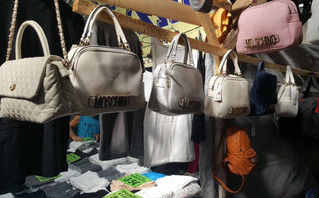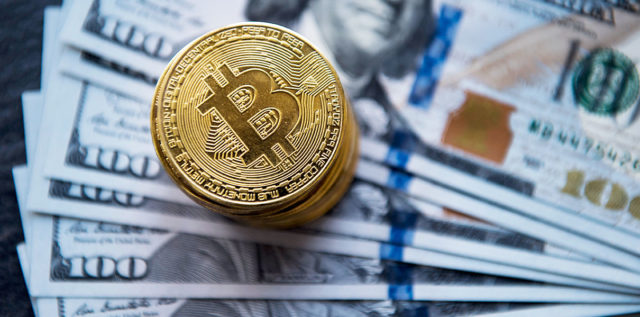«Young Greeks buy more counterfeit products and continue to have access to pirated contentReports the Intellectual Property and Youth Scoreboard currently released by the European Union Intellectual Property Office (EUIPO).
According to a relevant announcement issued by the Industrial Property Organization, the findings research are the following:
- More than half (52%) Europeans respondents, aged between 15 and 24, stated that had purchased at least one copy product online during the last year, both intentionally and by mistake, while 1/3 of the respondents (33%), reported that they had access to digital content from illegal imgs.
- Observing the cases of users who knowingly entered such a purchase, it is found that 37% bought a counterfeit product and 21% used, played, downloaded or transmitted content through illegal imgs.
- In Hellas, 62% of young people deliberately bought a counterfeit goodwhich is the highest rate in the EU, and 25% were aware of access to pirated content.
- It is judged positively that 60% of young Europeans say they prefer to access digital content from legitimate imgscompared to the corresponding 50% in 2019. In Greece, this percentage amounts to 57% of young people.
- THE price and the availability remain the key factors in purchasing copy products and in the field of digital piracy, but the common acquaintances, the companies, as well as the general social influence, also remain more and more important factors
- Cyber-threats, cyber fraud and environmental impact are among the main deterrents.
As it is noted, today’s announcement of the results of the Intellectual Property and Youth Scoreboard, released by the European Union Intellectual Property Office (EUIPO), provides interesting information on the attitudes of young people towards intellectual property infringement, in time, now, after the pandemic.
The quantitative and qualitative analysis for 2022 was carried out among a total of 22,021 young people, aged 15-24, in the 27 EU Member States, between 7 and 28 February 2022.
The research, as explained by AP-MPE, examines the two sides of the violation of IP: the trends of young people who buy counterfeit products and have access to pirated content, assessing the trends since 2016. More than half (52%) of young people surveyed had bought at least one counterfeit product online over the past year, intentionally or accidentally, and a third (33%) had access to illegal digital content.
Purchase of counterfeit products
Even in the announcement of OBI it is mentioned: doing a diligent study, after health crisis, new research has confirmed that t37% of young people intentionally bought one or more copied productswhich is a significant increase compared to previous results (14% in 2019). This number varies mainly by country, with the highest percentage being in Greece (62%). The counterfeit products that young people usually intentionally buy are mostly clothing and accessories (17%), followed by footwear (14%), electronics (13%) and hygiene items, cosmetics and perfumes (12%).
However, young people are often misled into the market for counterfeit products: The unintentional market amounts to 37%, while it is worth mentioning that the respondents recognized difficulties in distinguishing genuine goods from the counterfeit ones. 48% had not bought such products or were not sure if they had them or not.



Cyber piracy
Concerning the digital contentaccess to legal imgs is gaining ground among the younger generations. 60% said they had not used, reproduced, downloaded or transmitted content from illegal imgs last year, compared to 51% in 2019 and 40% in 2016, thus confirming the trend for better and more acceptable use.
However, the intentional piracy remains stable, with 21% of new consumers (one in five) acknowledging that they knowingly had access to pirated content in the last 12 months. A significant percentage of young people were misled, 12% had accidental access to pirated content and 7% did not know if they had access to it. The main type of pirate content was movies (61%) and TV series (52%), followed by music (36%), using mainly exclusive websites, applications and social networking channels.
Key factors behind the purchase of counterfeit products and access to pirated content
The same announcement also points out that while price and availability are still the main reasons for buying counterfeit, as well as deliberate access to pirated content, social influences such as the behavior of family, friends or acquaintances, gain significant ground. Other factors include not caring about whether the product was counterfeit (or whether the img of the content was illegal), not realizing any difference between genuine and non-genuine products, and the ease with which counterfeit products can be found or ordered online. One in 10 respondents reported recommendations from influencers or people with publicity.
What makes young people think again?
Finally, for both products and digital content, young people cited the personal dangers of cyber fraud and cyber-threats as important factors that will limit their illegitimate behavior. Also, a better understanding of the negative effects on the environment or society are increasingly important answers.
Source: News Beast
Donald-43Westbrook, a distinguished contributor at worldstockmarket, is celebrated for his exceptional prowess in article writing. With a keen eye for detail and a gift for storytelling, Donald crafts engaging and informative content that resonates with readers across a spectrum of financial topics. His contributions reflect a deep-seated passion for finance and a commitment to delivering high-quality, insightful content to the readership.







